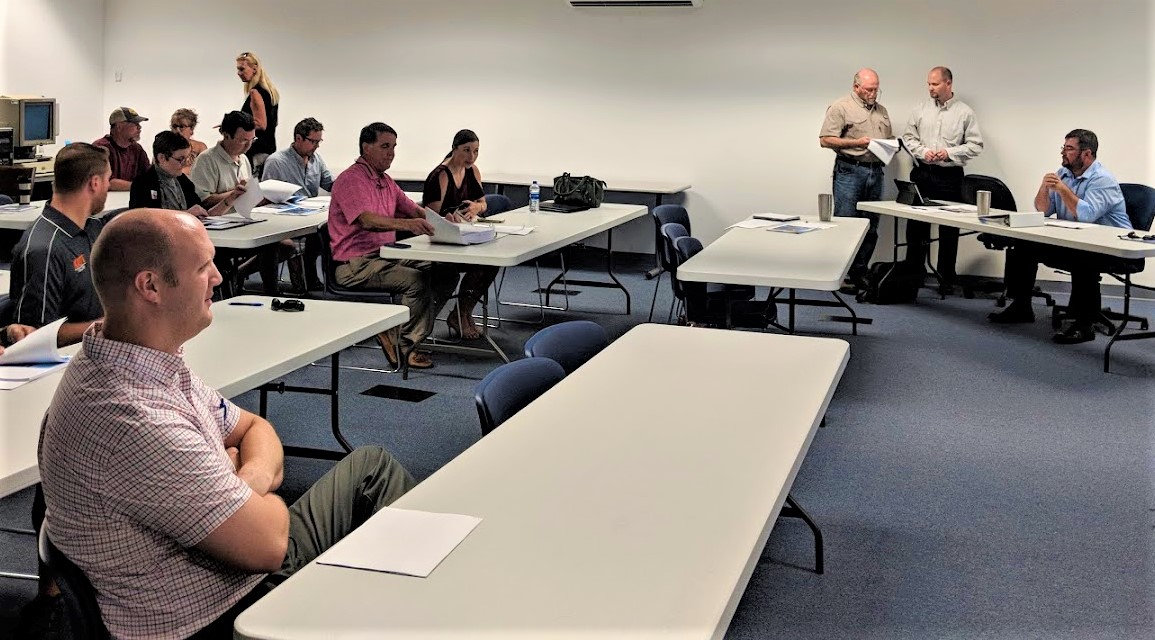
Representatives from several Santa Rosa County chambers of commerce and small business owners this morning met with Santa Rosa County staff to discuss proposed amendments to the county’s land development code — particularly ordinances related to temporary signage.
Santa Rosa County Planning and Zoning Director Shawn Ward told more than a dozen attendees that the county’s land development code (LDC) was basically “cut and pasted” in the 1990s from an example used by Vero Beach and since then Santa Rosa’s LDC has not been significantly overhauled.
Ward said revision of the LDC is underway now, and he expects to bring forth a draft to the county zoning board in November or December. The zoning boards recommendations will then be presented to county commissioners, who will make the final decisions on proposed changes.
Developer Edwin Henry served as facilitator of Wednesday’s meeting, stating he suggested it following the county’s effort to better enforce sign ordinances earlier this year – a move which was met with a lot of criticism from business owners.
“We don’t want our county to look like that,” Henry said, showing a photo of a right of way cluttered with signs placed illegally.
The county’s new Code Enforcement Director, Chris Phillips, said signs illegally placed in right of ways, which are generally the area between utility poles and roadways, pose not only safety issues but also consume county staff time.
According to Phillips, two new employees will join his department within the next two weeks. He said it’s common for them during one work day to collect hundreds of illegally placed snipe signs, which are then discarded at the county land fill.
County staff stressed that snipe signs are allowed on private property; however, only certain groups, such as non-profit organizations, may be issued permits to place those signs in right of ways.
But the main discussion of the meeting centered around feather signs which, unlike snipe signs, are not currently allowed on private property.
The consensus of the group was that the county should categorize feather signs as banner signs, allowing for their use on private property, and also remove the requirement that temporary banner signs be permitted, which Phillips described as a “nightmare” to try to police.
Henry noted that in exchange for the county relaxing its ordinances to allow businesses to use feather signs, business owners may need to compromise by supporting limits on the number of such signage allowed per business.
The group discussed ideas for further discussion of those related limits, including allowing each business to have two temporary and unpermitted signs and, perhaps, allowing multi-tenant properties or property owners with large amounts of road frontage to have even more.
Additionally, Colten Wright, owner of The Tool Shack in Gulf Breeze and a former appointee to the county’s zoning board, said he would like to see regulations put into place to address the appearance of signs such as those which have faded in color.
“That would be too much bureaucracy,” argued Pace Broker Pete Morgan, who said such an ordinance would also be hard to regulate due to its subjectivity.
Henry suggested instead revising the LDC to make enforcement more centered on safety issues than appearance.
“We would not advocate for an appearance ordinance of any kind,” said Phillips.
To review the county’s existing LDC related to signage visit https://www.santarosa.fl.gov/DocumentCenter/View/251/Article-08—Signage-PDF
To provide input on updating the LDC, email developmentservices@santarosa.fl.gov.





































